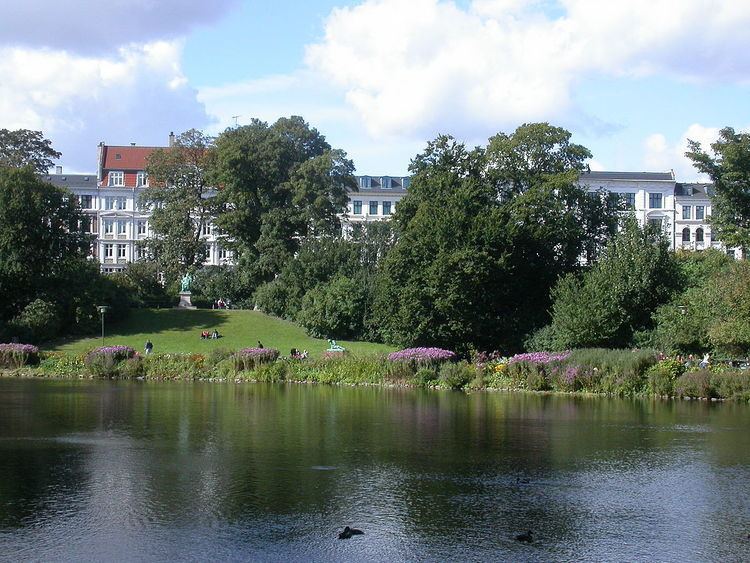Type Public Phone +45 33 66 33 66 | Created 27 October 1879 | |
 | ||
Owned by Copenhagen Municipality Hours Open today · Open 24 hoursSundayOpen 24 hoursMondayOpen 24 hoursTuesdayOpen 24 hoursWednesdayOpen 24 hoursThursdayOpen 24 hoursFridayOpen 24 hoursSaturdayOpen 24 hoursSuggest an edit Similar Østre Anlæg, University of Copenha, Rosenborg Castle Gardens, Nørreport Station, The Lakes - Copenhagen | ||
Disarray son a walk on the wild side live at h c rstedsparken
Ørstedsparken is a public park in central Copenhagen, Denmark. One in a series of parks which were laid out on the grounds of the old fortification ring after it was decommissioned in the 1870s, the park still retains elements from the old fortifications in its topography—a section of the moat now serve as an elongated lake and former bastions appear in the landscape as small hills. The park is named for the brothers Ørsted, the politician and jurist Anders Sandøe Ørsted, and the physicist Hans Christian Ørsted, who both are commemorated with monuments in the park.
Contents
- Disarray son a walk on the wild side live at h c rstedsparken
- Flower beds in wonderful copenhagen 3 rstedsparken
- History
- Layout
- H C rsted Monument
- Other memorials
- Classical replicas
- Flora
- Facilities and use
- References
Flower beds in wonderful copenhagen 3 rstedsparken
History
When Copenhagen's old fortification ring was decommissioned in 1868 and its grounds were relinquished to the City, it was decided that a significant part of it should be reserved for parkland for the city's rapidly growing population. The City Council adopted a plan for the redevelopment of the area in 1872 which resulted in three new parks—Ørstedparken, the no longer existing Aborreparken and Østre Anlæg—as well as the relocation of University of Copenhagen Botanical Garden a few years later.
Ørstedsparken includes the area from Ahlefeldt's Bastion til Bastion to Helmer's Bastion of the old Western Rampart. Gardener and landscape architect Henrik August Flindt was charged with the design and construction began in 1876. The new park was inaugurated on 27 October 1879. It was a promenade park and also included Copenhagen's first public playground. The grounds were listed in 1963.
Layout
Ørstedsparken covers 6.5 ha and is bounded by Nørre Voldgade, Nørre Farimagsgade, H. C. Andersens Boulevard and Frederiksborg Gade, with seven entrances distributed on all sides. It retains much of its original character.
The old fortifications have partly been preserved in the landscaping of the park. A section of the old moat now forms an elongated lake which runs along the length of the park. It has an area of 1,8 ha and a depth of about 4 metres. In 1994, an underground connection to Peblinge Sø was created to improve the water quality. The water circulates between the two lakes, especially during the winter. The wrought iron bridge which today crosses the lake, originally spanned the gap created with the demolition of the Northern City Gate in 1857. In 1873, the bridge was dismantled and re-built at its current location.
H. C. Ørsted Monument
The monument over Hans Christian Ørsted stands on the former Holck's Bastion. It was designed by Jens Adolf Jerichau and erected in 1876, when work on the park just started. The monument consists of a bronze statue of Ørsted mounted on a granite plinth. Ørsted is seen demonstrating the effect of an electric current on a magnetic needle. With his hands he is connecting the wires from an electric battery, thereby making a magnet oscillate. At the foot of the statue sit the three Norns or goddesses of destiny in Norse mythology, Urðr (the past) who is noting the past, and Ørsted's name, on a tablet, Verðandi (the present), who with her distaff is spinning the thread of fate, and Skuld (the future), who is silently awaiting the fullness of time with a rune stick in her hand.
Other memorials
Besides the monument for H.C. Ørsted, the park also contains monuments for
Classical replicas
Spread over the park are also a large number of statues, granted by the Albertina Foundation which was created by the head of Carlsberg, Carl Jacobsen. Among these are:
Flora
The park has a number of unusual varieties of trees. These include Dawn Redwood, Maidenhair Tree and Pagoda Tree from China, Gleditsia from the USA, European hornbeam and Horse Chestnuts. In March–April, Common Butterbur is blooming on the embankments of the lake, and in the large garden behind the H. C. Ørsted monument, 26,000 Dutch crocuses bloom in shades of blue, yellow and white. These were planted after World War II.
Facilities and use
In 1991, a café pavilion was built on a site overlooking the lake. It houses Café Hacienda, which serve as a venue for public debates on Sundays.
There are also two public playgrounds in the park, one supervised, and barbecues for public use. There are often open events on the lawns, with e.g. concerts in the summer.
